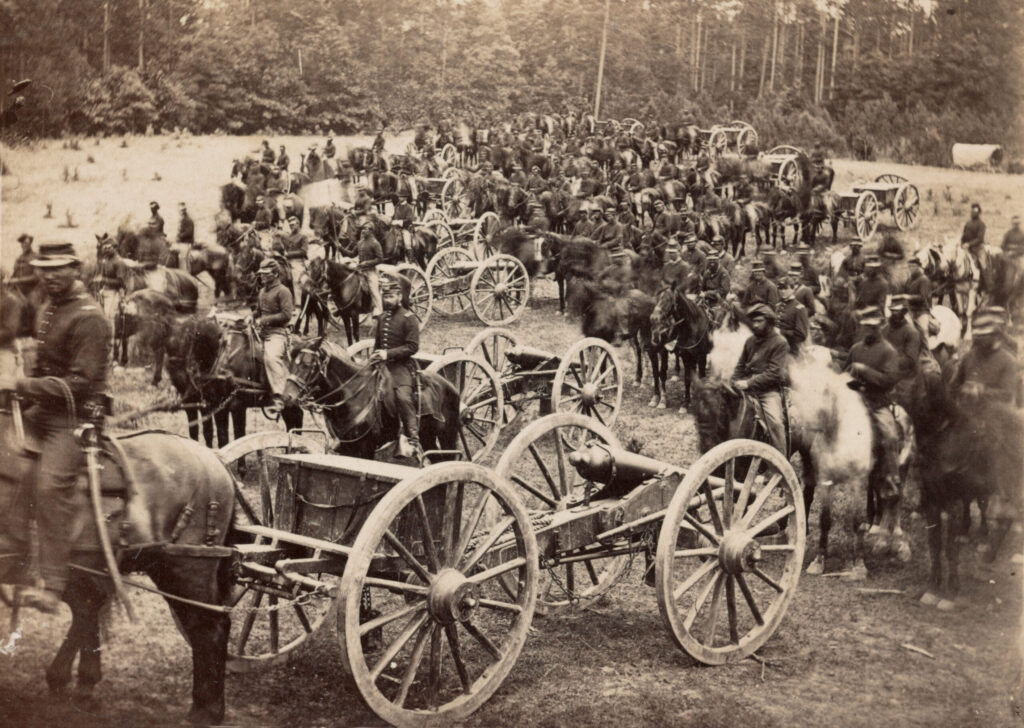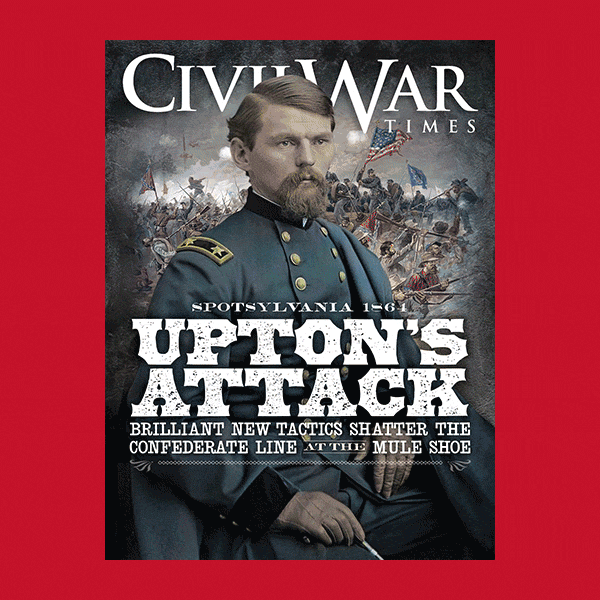No larger collection of artillery had ever been brought to a war’s battlefields in the Western Hemisphere before the Civil War. More than 200,000 men, trained and educated like no other subset of soldiers in this war of amateurs, handled and operated these big guns.
The story continues that the Civil War changed the standards, rules, and results of artillery use, advancing technological, tactical, and other norms forward from the Napoleonic wars, with their smoothbore guns and inaccurate round shot, toward a present and future determined by rifled guns that could be expected to hit their targets with regularity. Artillery would dominate from here on, and the side that figured out how to use it best would surely be victorious.

Not so fast, says Earl J. Hess. The professor emeritus of history at Lincoln Memorial University and author of 30 books on the Civil War argues in his 2022 study Civil War Field Artillery: Promise and Performance on the Battlefield that these advances were overrated in determining the war’s outcome as well as the proper place of its artillery on the timeline of military history.
Let’s get right to the heart of it: The Civil War is often considered the “first modern war.” You argue that it was mostly a traditional one. Please explain.
Anyone who views the Civil War as the first modern war has a very hard case to prove. In my view it overwhelmingly was closer to warfare during the Napoleonic era 50 years before than to World War I 50 years later. A Napoleonic soldier would have been quite comfortable on a Civil War battlefield, while a Civil War soldier would have been stunned by the battlefield created by the Great War of 1914–18.
In light of that, what were the differences between the artillery forces of previous wars and those of the Civil War?
Civil War artillery saw only relatively slight improvement over that used in the Napoleonic era. The biggest difference was rifling, which applied to only about half the pieces used during the Civil War. Yet, because mostly of problems with igniting long-range ordnance and problems with seeing targets at great distances, there is no proof that rifled artillery produced any noticeable results on Civil War battlefields other than the odd long-range shot that hit its target because the gun crew happened to be particularly good.
What were the main improvements over the past?
Another difference between Civil War artillery and that of previous decades was adding heavier ordnance to the mix. Six-pounders were phased out during the first half of the Civil War in favor of 10-pounders and 12-pounders. Also, the trend was toward eliminating all decorations and handles on the artillery tube because they caused weak points that could not resist the stress of firing as well. Sleek-looking designs, heavier ordnance, and lighter pieces for easier moving around were the trends evident by the 1850s and 1860s. All this amounts to an improvement on the age-old system of artillery, but not a revolutionary break from it.
What were the greatest disappointments of Civil War artillery?
Probably the greatest disappointment was the failure of rifled pieces to prove their worth on the battlefield. Their limitations became apparent to many. That is why about half the pieces used by both sides during the war still were smoothbore. Many gunners were convinced they were at least as good as the new rifles, or better.
How much did the improvements and disappointments have to do with winning and losing the war?
Civil War artillery failed to achieve more than a supporting role to infantry. It did not come to dominate the battlefield as would happen along the Western Front during World War I. Even in static campaigns like that at Petersburg, and despite the heavy concentration of artillery pieces along the 35-mile-long trench system at Petersburg and Richmond, the guns failed to provide a campaign-winning edge for either side. That does not mean they were unimportant, by any means. They could and did on occasion elevate their role on the battlefield to something like a decisive edge under the right circumstances. One could argue that Union guns did so on January 2, 1863, at Stones River, and Confederate guns did so at the Hornet’s Nest at Shiloh, for example. But far more common was their accomplishment in helping infantry hold a position, a much less prominent, though important, role.
One of the issues you cover in your book is the conflict over control of the artillery between the artillery itself and the infantry. How important was that, and how did it resolve?
Artillery was a supporting arm of the infantry, and to a lesser extent of the cavalry. It did not have the ability to operate independently, always needing support from foot or mounted troops. That is one of the reasons army culture considered it best to vest infantry commanders with the authority to command artillery. Batteries were assigned to infantry brigades and were under the infantry brigade commander’s orders and relied on his infantry brigade staff for their supplies as well.
Some artillery officers complained of this arrangement for several reasons. The most prominent one was that it inhibited the concentration of artillery on the battlefield and thus robbed it of its potential to play a decisive role in combat. But more importantly, they complained that infantry brigade staff simply did not know how to supply batteries very well. Another important reason for their complaint was that dispersing the batteries to infantry units greatly limited advancement for artillery officers, most of whom could look forward to holding nothing higher than a captaincy of a battery.
While historians have widely accepted the opinion of artillery officers without question, I argue that their complaint has only limited validity. The complaint about the inability to concentrate the guns to play a prominent role on the battlefield does not hold water. The most visible concentrations of guns, at Shiloh and Stones River, took place in armies that practiced dispersion of batteries to infantry brigades. The system was flexible. If infantry officers wanted to, they had no difficulty concentrating batteries for a specific job on the battlefield.

(Library of Congress)
There must have been something to their complaints…
Their complaints were quite valid when it came to administrative control, rather than battlefield control. They needed their own staff to supply the batteries and to constantly train the men.
By the midpoint of the Civil War, the major field armies of both sides began to group field artillery into units of their own, called artillery brigades in some armies and artillery battalions in others. Between battles, these units were under the control of an artillery officer appointed to his position, and he was responsible for supply and training. But during a battle, control of those units reverted to infantry commanders at the division or corps levels. This was not everything the artillery officers wanted, but it was more than they ever had before in American military history. Moreover, it essentially was the system used during the 20th century wars as well.
In the Civil War this arrangement improved the administration and upkeep of the artillery force, but it did not noticeably improve its battlefield performance, which was as good early in the war as it was later in the conflict. Even though some infantry officers foolishly ordered the guns about even though they knew nothing about how to use them, an equal number were keen students of artillery practice and could use the guns well on the battlefield.
There was a third group of infantry officers who knew little if anything about how to use artillery but were wise enough to allow their battery commanders a completely free hand in operating under fire. In other words, there is not such a clear-cut difference between the dispersion policy of 1861–62 and the concentration policy of 1863–65.
How should we think of the Civil War as it occupies the space between Napoleonic warfare and World War I?
I do not see the Civil War as a transitional conflict between the Napoleonic wars and World War I so much as a minor variation on the Napoleonic model. The things that made the Great War the first truly modern conflict were largely or wholly absent in the Civil War. If that is transition, then one could say there was a huge leap across a big chasm between 1865 and 1914, but an easy step back from 1861 to 1815.




